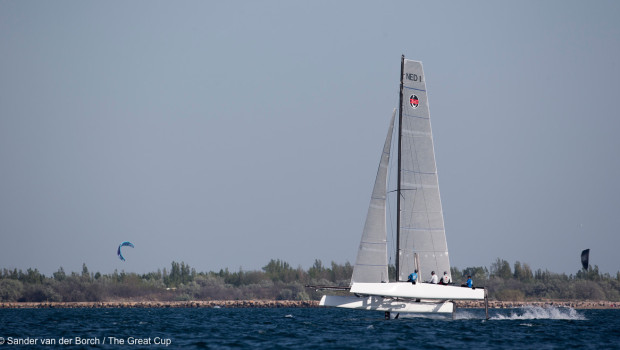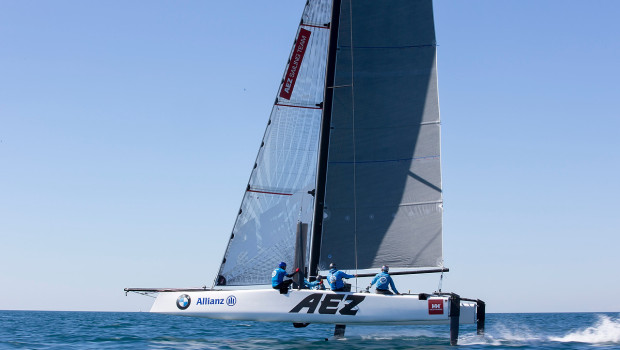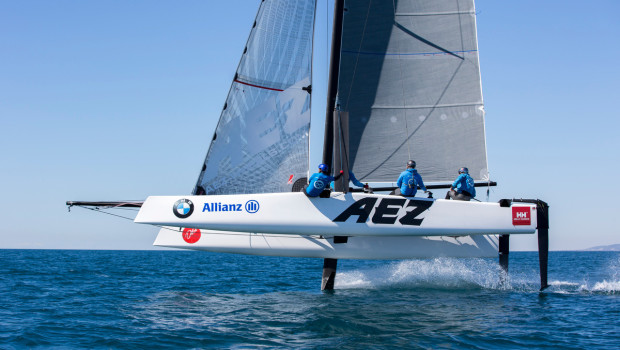PHOTOS: Sky is limit for full foiling GC32
Published on April 19th, 2014
PHOTOS: Sky is limit for full foiling GC32
Published on April 19th, 2014A selection of photos of the GC32 foiling in La Grande Motte, France. Credit: Sander van der Borch / The Great Cup
After The Great Cup’s GC32 catamarans had their first season in 2013, the boats received a foil upgrade during the winter to transform the twin-hulled speedsters into full foilers in above 8 knots of wind.
The new L-foils now enable the one design GC32s to race elevated from the water, in a similar gravity-defying fashion to the AC72 catamarans that caused such a phenomenon at the 34th America’s Cup in San Francisco this summer.
“Our focus has always been to deliver a sustainable product for our owners,” explains Laurent Lenne, founder of The Great Cup and skipper of the SPAX Solutions GC32. “When we started the project the AC boys were only talking about foiling, but now their boats are flying, and it was our duty to close this gap by changing our boats so that they can fly too.”
L-foils of this type represent the most cutting edge technology in sail boat design at present, but the priority was to provide a ride targeted at sailors of average proficiency or above and easy to sail.
Key to achieving this was fitting foils that provide a stable ride without constant porpoising. G32 designer Martin Fischer explains how this is achieved: “Ride height, or ‘heave’, stability is an essential feature of every foiling boat. This can either be obtained with an active control system – like the wand mechanism on a Moth – or with a foil design that is inherently stable. With the GC32 we went for that second option.”
This heave stability depends primarily on the angle between the vertical strut and horizontal tip of the L-foil daggerboard: Essentially the smaller the angle between them, the more stable the ride, but this does come at the cost, says Fischer: “It is important to find the right trade-off between heave stability, safety and controllability on one side, against drag and theoretical speed on the other. A foil with a wider strut-tip angle may be theoretically quicker, but that does not help if the foil is so difficult to handle that its full potential cannot be exploited.”
Thus the new GC32 foil has a moderate angle between its vertical strut and tip, and the heave stability is further improved by varying the wing section along the span of the foil.
Early testing has found the GC32 fully foiling upwind in as little as 6 knots, and hitting speed in the low 30s in 15 knots of wind.
Compared to the AC72 set-up, controls for the GC32 boards will also be simplified. The boards will go up and down and crews will adjust their rake (fore and aft inclination). Fortunately the GC32’s original ‘double S’ daggerboards are already set up so that their rake can be adjusted. Similarly while the change of foils is significant, the cases into which they fit required just a change of roller to accept the new boards.
The GC32’s existing L-foil rudders were replaced by T-foils, as on the AC72s.
Below is the 2014 GC32 European Tour.
























 We’ll keep your information safe.
We’ll keep your information safe.